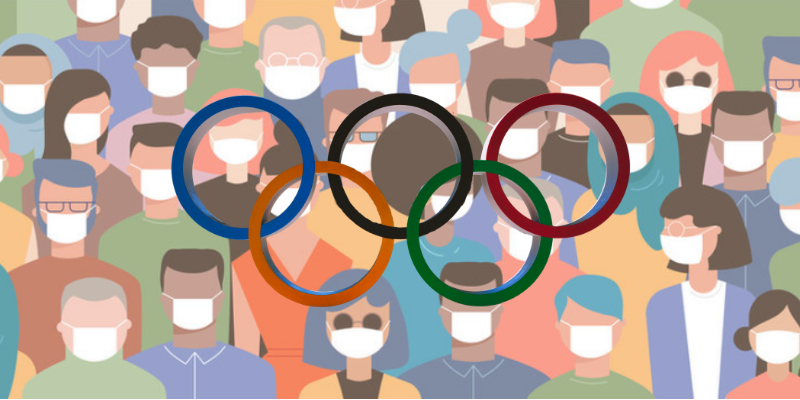Massage has been used in the treatment of illness and injury for thousands of years by health care practitioners. It is believed to have myriad benefits, from soft tissue health and healing to psychological health and stress reduction.
Normally, massage will be carried out by a qualified practitioner to aid an athlete's recovery from intense exercise, or indeed to help prepare an athlete for competition. It can also be used as an intervention for the rehabilitation of musculoskeletal injuries.

Muscle recovery
“When used between exercise bouts, massage and manipulation speeds up recovery from training and facilitates healing of soft tissues”, says trainer and rehabilitator Liam Grimley from Elevate Sport, who has worked with countless professional athletes, as well as, keen amateur sports people.

He continues: “A light, flushing massage can be applied shortly after exercise. This aids in tissue fluid or lymph flow and the removal of fatiguing waste products from exercise. It’s a great way to get a head start on your recovery.”
Grimley, however, warns that intense massage should only be administered at the right times: “Deep techniques that “break down” scar tissue and release trigger points in the muscles should be reserved for 24-48 hours following intense training or competition”.
Bioelectrical therapy – a complement
Grimley is a strong advocate of bioelectrical therapy and believes it can hugely complement massage when used for muscle recovery. Particularly, in our current environment where massage and physiotherapy might not be as readily available due to newly enforced lockdown procedures.

He recommends the use of bioelectronic technology, such as NuroKor, as an alternative or adjunct:
“You can apply the various protocols of your NuroKor device to relax muscles and increase blood flow prior to massage, potentially getting even more from your treatment.”
He also believes that applying a ‘recovery’ protocol shortly after a massage will optimise response to the massage.

"The NuroKor ‘Recovery Mode’ helps stimulate blood flow for the removal of fatiguing by-products of exercise, whilst at the same time, delivering nourishing blood for healing and recovery", says Grimley. "Resting muscle tone is more readily restored, facilitating relaxation and the recovery process. All these things can significantly reduce delayed onset muscle soreness (DOMS) allowing quicker return to training readiness."
Rehabilitation
“Massage can break down scar tissue and toughen up the new tissues that result from injury and tough training,” says Grimley. Therefore, if you are suffering from a minor exercise-induced injury as a result of over exertion or excessive use, then massage could be an option to aid rehabilitation.

Grimley also suggest using bioelectrical therapy to complement rehabilitation after a massage:
“Where in the past I would have suggested icing a sprained ligament or strained muscle after a deep rehab massage, now I recommend the MCS microcurrent protocol on the NuroKor mitouch.”
Microcurrent is a bioelectronic technology which utilises the body’s natural bioelectrical current to help promote tissue repair and the recovery process. It offers an easy-to-use, at-home alternative to enhance the body’s natural recovery process.

More manipulation
Although massage is the most commonly used manipulation technique for muscles, Grimley is an advocate of other manipulation for athletes: “For me, manipulation is a broad term - you could use it to describe rolling and stretching. I use Instrument Assisted Soft Tissue Manipulation (IASTM) techniques in my practise for muscle and fascial work that is a close relative of massage.”
Find an expert
Although it can be tempting to cut corners, Grimley warns that your practitioner should be properly qualified: “A good therapist will go through a comprehensive health questionnaire before a massage. A deep massage can sometimes result in bruising; good bruising is yellow, green or brown which indicates the release of waste and metabolites. Red and blue bruising is a step too far, indicating new trauma that could be counterproductive.”

CSP has advised that physiotherapist services will at this stage remain open during lockdown. In the case this option is not readily available, it is recommended to organise an online consultation with your local physio to discuss alternative at-home therapy options, such as bioelectronic technology.
Over reliance
Grimley believes that athletes can often become over reliant on massage and manipulation. He says:
“I aim to empower my athletes to take charge of their wellbeing and recovery. Massage is excellent but is part of a bigger picture.”

He concludes: “Make sure you are doing all you can to help yourself, and don’t become reliant on that massage couch!”
Learn more about Liam Grimley and Elevate at www.elevatesport.co.uk or on Instagram @elevatesport
Click here to learn more about how NuroKor aids pain management and recovery
Click here to learn more about the NuroKor mibody



